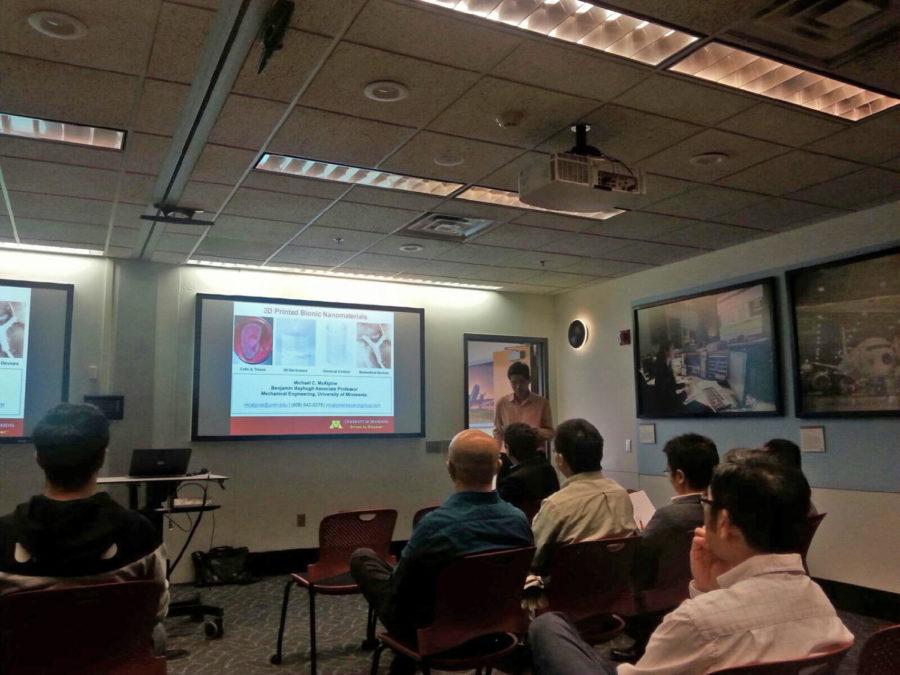Professor uses 3-D printing to fabricate ear
Felipe Cabrera/Iowa State Daily
3D Prosthetics
November 3, 2015
Imagine being able get an organic ear implant with hearing better than the average human or an eye with lenses that can zoom, possibly take pictures. All this can be possible with 3-D printing technology.
A seminar titled “3-D printed Bionic Nanomaterials” took place Tuesday in Howe Hall with speaker Michael C. McAlpine.
McAlpine is the Benjamin Mayhugh Associate Professor of Mechanical Engineering at the University of Minnesota.
At the seminar, McAlpine went over his research using a custom, in-house-built 3-D printer to create cells, tissues, 3-D electronics, chemical control and biomedical devices from scratch.
“Usually when we talk about bionics we’re talking about making robots more like humans,” McAlpine said. “We’re trying to focus on something a little bit different — we’re trying to make humans more like robots.”
McAlpine said he and his team focused on using 3-D printers to seamlessly integrate electronic and mechanical devices with the body by installing these devices onto the body in a 2-D fashion.
“This is not science fiction,” McAlpine said. “It’s so intrusive to have part of your skull removed and have this [device] mounted in the place your skull was to have something interwoven in your ear.”
McAlpine, using his custom 3-D printer, was able to print a bionic ear from scratch where the electronics grew in with the organ. This was achieved by using cells and a hydrogel, which is a gel with a water component made from a polymer.
The bionic ear can do more than regenerate a lost sense. McAlpine said this opens the doors to more applications, such as acute hearing and even potentially creating a human-machine interface.
So imagine having a bionic sixth sense that can pick up electronic stimulus. You could plug in your phone directly into your ear and communicate with your smartphone directly through your brain, answering phone calls or listening to music.
“3-D printing can be used for any functional material,” McAlpine said. “Any material you can think of can be used in our printer.”
McAlpine and his team also used 3-D printing for nerve regeneration to restore motor function or feeling in the body.
Peripheral nerve injuries impact 200,000 people annually, McAlpine said, and costs large sums of money in healthcare. A new nerve to bridge the gap can be created with the help of a 3-D scanner to scan a similar nerve and feed that data to a 3-D printer to create the replacement.
“The idea of creating new bionic body parts with advanced capabilities is an exciting venture,” said Justin Miranda, sophomore in chemical engineering. “This is definitely going to play a part in human evolution in the decades to come.”







